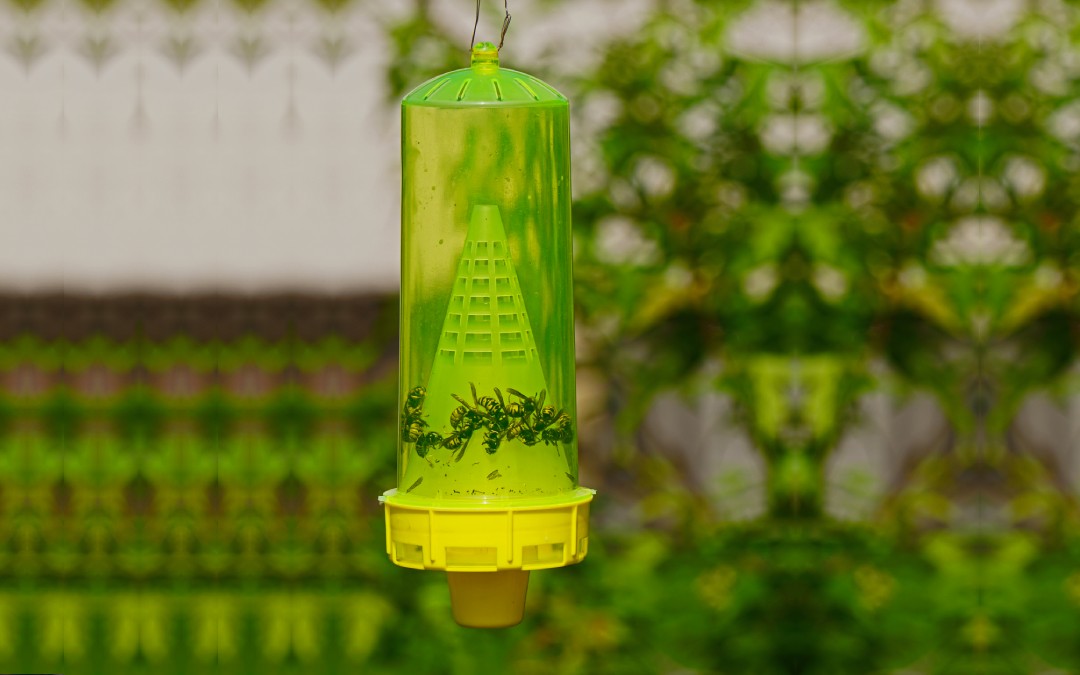Wasps can be more than just a nuisance; they pose a risk of stings that can be particularly dangerous for allergy sufferers.
Understanding how to effectively use wasp traps can be a key element in managing these pests.
This article provides an in-depth look at wasp traps, covering types, usage, placement, and maintenance.
Understanding Wasp Traps
Wasp traps are devices designed to lure and trap wasps, preventing them from escaping. They use attractants like sweet liquids or proteins to draw wasps in. There are various types of traps available, each suited to different environments and wasp species.

Types of Wasp Traps
- Homemade Traps: These can be made using simple household items, like plastic bottles, with bait such as sugar water, fruit juice, or protein-based baits like meat in early summer.
- Commercial Traps: These are readily available and often include attractants specifically designed to lure wasps. They can be reusable or disposable.
Choosing the Right Bait
The effectiveness of a wasp trap significantly depends on the bait used.
- Early Summer: Wasps look for protein sources, making meat or fish-based baits effective.
- Late Summer and Fall: As they switch to carbohydrate-rich diets, sweet baits like sugar water or soda become more attractive.
Placement of Traps
Where you place the trap is as crucial as the trap itself.
- Away from High-Traffic Areas: To avoid drawing wasps towards people, place traps at the perimeter of the area you want to protect.
- Near Known Wasp Areas: If you’re aware of where wasps typically gather or their flight paths, placing traps in these areas can be more effective.
Maintaining Your Wasp Traps
Regular maintenance is key to the success of your wasp traps.
-
Check and Clean Regularly: Overfilled or dirty traps can become less effective and even attract more wasps. Regular cleaning and bait replacement are necessary.
-
Disposal: For disposable traps, follow proper disposal methods once they are full. For reusable traps, clean them thoroughly before setting them up again.
Safety Considerations
Handling wasp traps requires caution to avoid stings.
-
Protective Clothing: Wear gloves and, if possible, long sleeves when handling traps, especially during cleaning or bait replacement.
-
Placement Height: Ensure traps are placed at a height safe from children and pets.
Environmental Impact
Consider the environmental impact of your wasp trapping efforts.
-
Non-Target Captures: Be mindful that traps can also inadvertently capture beneficial insects. Use them responsibly and only when necessary.
Complementary Wasp Control Methods
While traps can help manage wasp populations, they should be part of a broader pest control strategy.
-
Remove Attractants: Keep outdoor areas clean of food scraps and cover garbage bins securely.
-
Seal Entry Points: Reduce the likelihood of wasps entering homes or sheds by sealing cracks and gaps.
For more tips on keeping wasps away, check out our article here
When to Seek Professional Help
If wasp populations are particularly high or if you find large nests, it may be safer to seek professional pest control assistance.
Wasp traps can be a highly effective tool in managing wasp issues when used correctly.
By selecting the right type of trap, using effective baits, placing and maintaining the traps properly, and considering safety and environmental impacts, you can significantly reduce the presence of these pests in your outdoor spaces.
Remember, wasp traps are most effective when used as part of a comprehensive pest management strategy.


